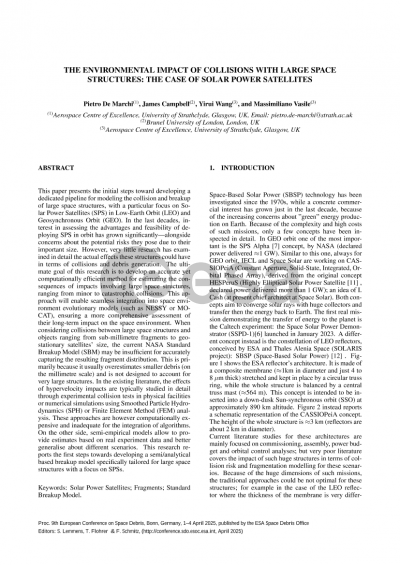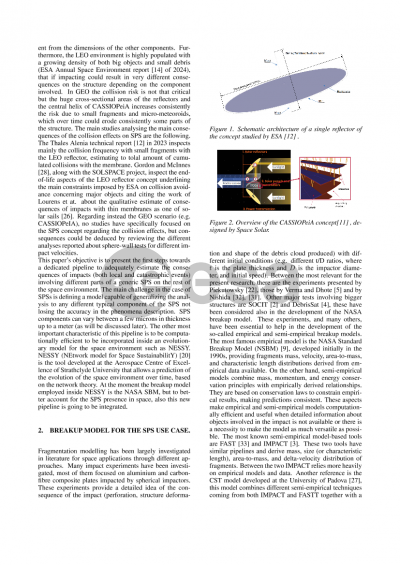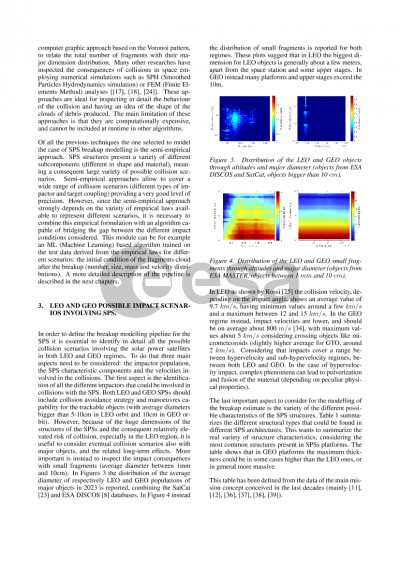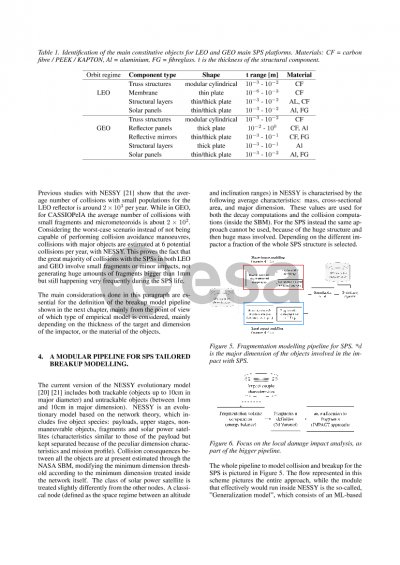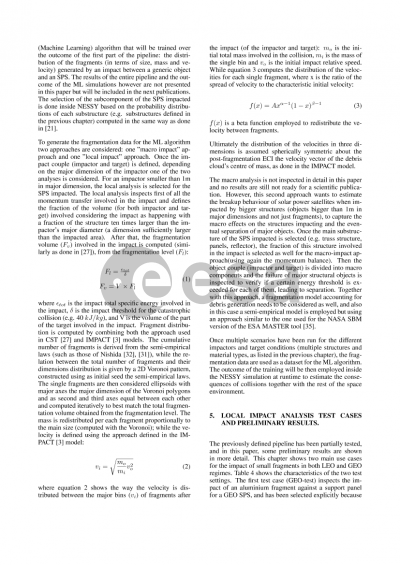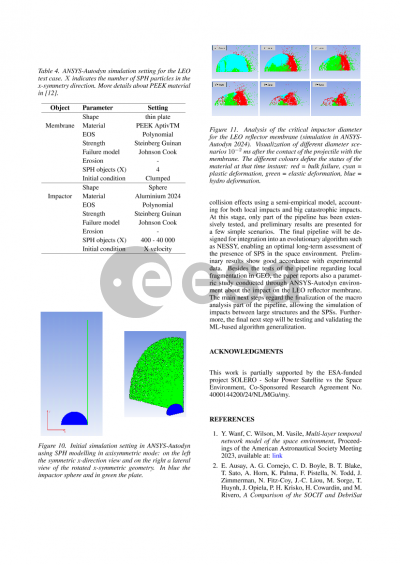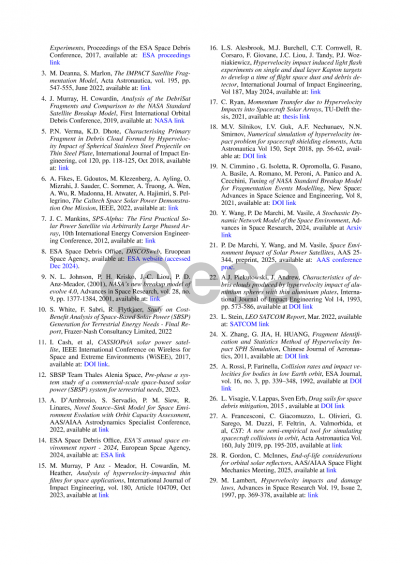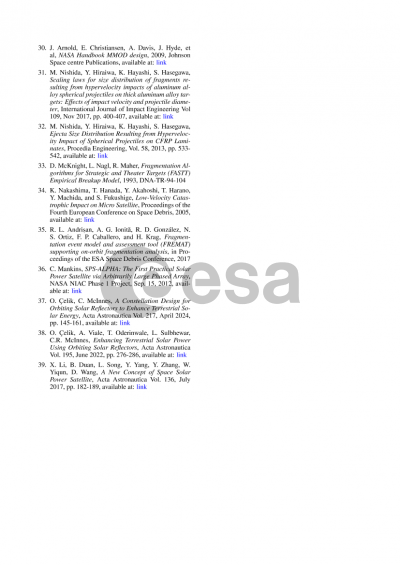Document details

Abstract
The paper presents a numerical analysis of the collision between a space object and a large space structure. The paper will focus, in particular, on solar power satellites (SPS) placed in either Low Earth Orbit (LEO) or Geosynchronous Orbit (GEO). We will use a mix of Smoothed Particle Hydrodynamics and Finite Element Simulations to derive a model of the distribution of the fragments post-collision.
For collisions between large space structures and objects with a size ranging from a sub-millimeter fragments to geo-com satellites, the current NASA standard break-up model (SBM) is inadequate to capture the distribution of the fragments. In the current literature, the effect of hypervelocity impacts is studied with high-fidelity hydrocode (or wave propagation codes) simulations, and laboratory experiments with simple geometries. In this paper, we will model collisions with different structural elements of an SPS, simplifying the geometry to optimize the computational complexity. The outcome of the numerical simulations will be used to build a surrogate model of the distribution of the fragments.
The distribution of the fragments will be introduced in a recently developed network-model of the space environment to assess the sustained and induced risk of placing one or more SPS in LEO and GEO. This analysis is essential to better understand the long-term impact of SPS on the space environment.
While most of the research on SPS has considered the sustained damage of an SPS immersed in a debris environment, there is still little understanding of the consequences of collisions with an SPS. The outcome of a collision is strongly dependent on the component of SPS with which a space object collides. For example, one of the concepts of SPS studied by ESA and Thales Alenia is a constellation of reflectors in LEO orbit. Those reflectors are made of a 1 km in diameter ring and a very thin membrane (a few micrometers thick) of composite material (the most critical for impact modelling), plus a series of truss structures employed for keeping the membrane in place and balancing the structure. The consequences of the impact between the membrane and objects of different sizes is still partially understood. Likewise, a collision with the ring or the trusses will have quite a different outcome that the SBM does not correctly capture. For this use-case, the focus of the impact analysis is mainly on the more peculiar membrane structure. Another advanced concept is CASSIOPeiA, currently studied by Space Solar. CASSIOPeIA is expected to operate in GEO with a massive structure composed by two large reflectors, made of composite material with a very thin reflective layer, and a central helix, composed of multiple power conversion and transmission units. We will model the collision with elements of both SPS concepts and the consequences that such a collision may have on the space environment.
Reference
Wang Y., De Marchi P., Vasile M. (2024) “A Stochastic Dynamic Network Model of the Space Environment”. https://arxiv.org/abs/2411.03173
Preview
